Hill A.V. The Encyclopedia of Operations Management: A Field Manual and Glossary of Operations Management Terms and Concepts
Подождите немного. Документ загружается.

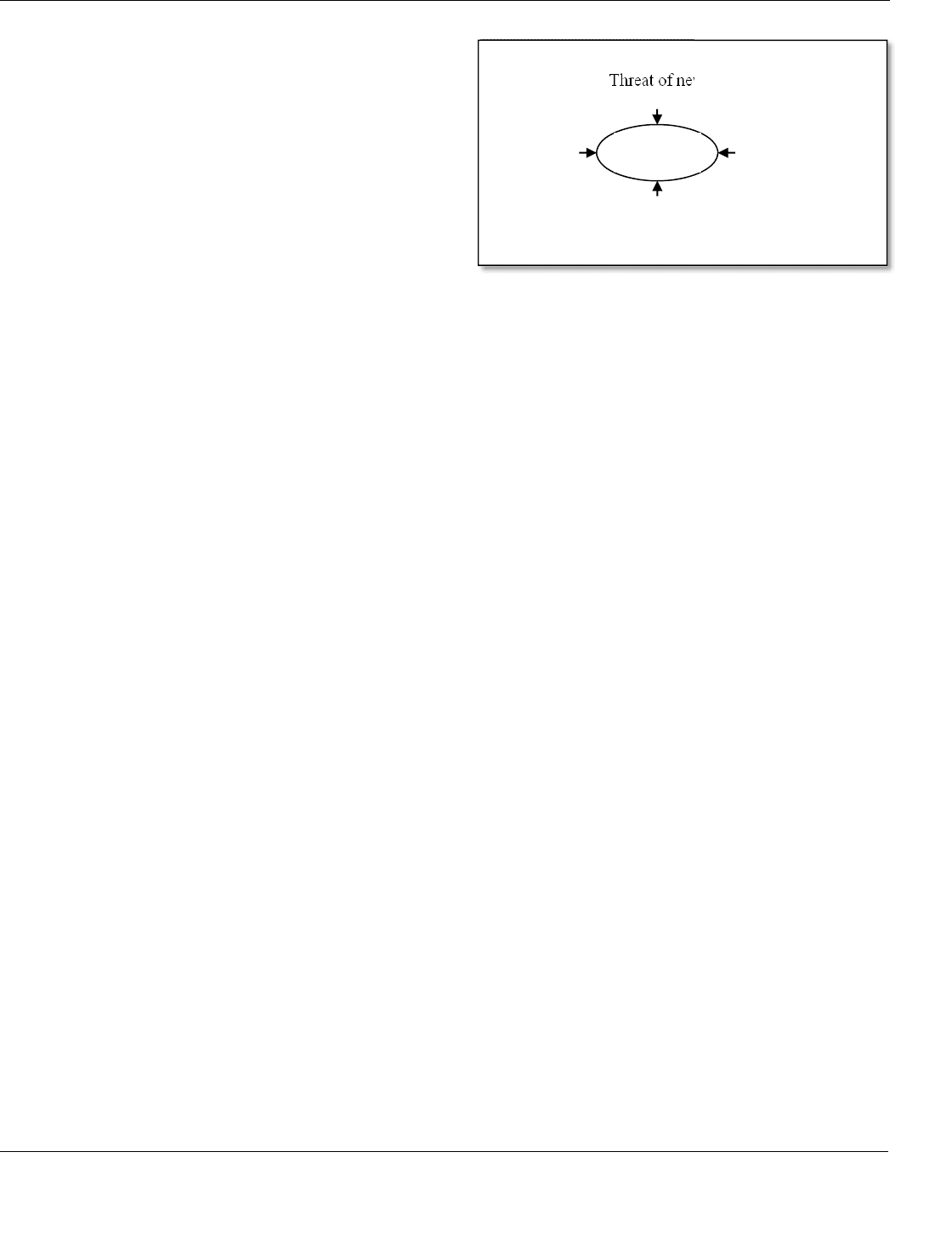
ptg6843605
fishbone diagram
–
flexibility
The Encyclopedia of Operations Management Page 136
fishbone diagram – See causal map.
five forces analysis – An industry analysis tool used to
better understand a competitive environment.
Michael Porter’s five forces analysis (Porter 1988)
can be used by any strategic business unit to evaluate its
competitive environment. This analysis looks at five
key areas: threat of entrants to the market, the power of
buyers, the power of suppliers, the threat of substitutes,
and competitive rivalry. The model is shown below.
See competitive analysis, industry analysis,
operations strategy, SWOT analysis.
five S – See 5S.
fixed order quantity – The policy of using a constant (fixed) lotsize in a production or inventory planning system.
The Economic Order Quantity (EOQ) is a special case of a fixed order quantity. SAP and most other
ERP/MRP systems will order in multiples of the fixed order quantity if the net requirements require more than
the fixed order quantity.
See Economic Order Quantity (EOQ), lotsize, lotsizing methods.
fixed price contract – A contract to complete a job at a predefined and set cost; also called a fixed-cost contract.
The contractor is obligated to finish the job, no matter how much time or cost is actually incurred. In other
words, the contractor takes all the risk.
See buy-back contract, purchasing, risk sharing contract.
fixed storage location – The practice of storing items in a storage area that is labeled with the item ID.
With fixed storage locations, each item has a home location with the item’s identification (part number, item
number, SKU) on the shelf. Fixed storage locations are generally inefficient and hard to maintain because the
space requirements for products in storage usually change over time as the demand patterns change. These
changes require that the organization frequently reallocate the fixed location assignments or have excessive
amounts of extra space allocated to each product.
On the positive side, fixed storage locations make it easy for people to find products. Most firms find that a
mixture of fixed and random storage locations systems makes sense. The fixed storage locations are used for
high-volume products where people are frequently picking items. These locations are replenished often from
random storage locations that hold larger bulk quantities of items.
See locator system, random storage location, supermarket, Warehouse Management System (WMS), zone
storage location.
fixture – A device used to hold a work piece securely in the correct position relative to the tool while work is being
done on the work piece.
Unlike a fixture, a jig can guide the tool.
See jig, manufacturing processes, tooling.
flexibility – The ability to change (adapt) quickly and efficiently in response to a change in the internal or external
environment.
Although the term “flexibility” is used very commonly in business, it is often used inconsistently and has
several very different definitions. A major contributing factor to this ambiguity is that organizations face a wide
variety of uncertainties and therefore need to have many types of flexibility. However, when managers and
researchers discuss flexibility, they often fail to specify which type of flexibility they have in mind. Flexibility
can be viewed both strategically and tactically. From a strategic point of view, flexibility can be defined as:
Volume flexibility
– The ability to quickly and efficiently increase or decrease the production rate. This is
sometimes called scalability and is about having economies of scale or at least avoiding diseconomies of scale.
Mix flexibility
– The ability to efficiently handle a wide variety of products in one facility. Other authors
define mix flexibility slightly differently. Schroeder, Meyer Goldstein, and Rungtusanatham (2011) defined it as
the time to change the mix of products and services; Sethi and Sethi (1990) defined it as the ability of the
manufacturing system to produce a set of part types without major setups; and Dixon (1992) defined it as the
Competitive
rivalr
y
Threat of new
entrants
Porter’s Five Forces
Bargaining
power
of buyers
Threat of
substitute products
Bargaining
power
of suppliers
Porter, M.E. (1985).
Competitive Advantage,
Free Press, London.

ptg6843605
Flexible Manufacturing System (FMS) − FMCG
Page 137 The Encyclopedia of Operations Management
ability to manufacture a variety of products within a short period of time and without major modifications of
existing facilities. Mix flexibility is closely related to product range.
Customization flexibility – The ability to quickly and efficiently provide a wide range of “respond to order”
products. This is sometimes called mass customization and is fundamentally about having economies of scope or
at least avoiding diseconomies of scope.
New product development flexibility – The ability to quickly and efficiently bring new products to market.
All four of the above flexibilities require the flexibility to be efficient. Unless the organization can “flex”
efficiently, it is not truly flexible. For example, it might be possible for a firm to reduce its volume from 100
units per day to 50 units per day, but it is not considered to have volume flexibility if the cost per unit doubles.
Sethi and Sethi (1990) provide a research review article on this subject.
See diseconomy of scale, mass customization, New Product Development (NPD), production planning,
resilience, respond to order (RTO), scalability.
Flexible Manufacturing System (FMS) – An integrated set of machines that have automated materials handling
between them and are controlled by an integrated information system.
See automation, cellular manufacturing, manufacturing processes, product-process matrix.
float time – See slack time.
floater – A direct labor employee used to fill in on a production line when the regular worker is absent.
floor planning – An arrangement used by a retailer to finance inventory where a finance company buys the
inventory, which is then held in trust for the user.
floor stock – Inventory stored close to a production process so workers can use it without an inventory transaction.
The labor cost of handling inventory transactions for lower cost items, such as fasteners, can sometimes be
more than the cost of the items themselves. This is also true for bulk items, such as liquids in drums or wire on
rolls. This is often solved by moving materials to floor stock as either bulk issued or backflushed items.
With bulk issues, the inventory balance in the warehouse inventory is reduced by the quantity issued and the
floor stock account is increased by the same amount. The floor stock inventory is considered out of the system
and the system may immediately call for a new reorder. In contrast, with backflushing, the MRP system
considers the floor stock as available inventory and the floor stock inventory is reduced when the product is
shipped. The backflush quantity is based on the “quantity per” in the bill of material (BOM).
See backflushing.
flow – The movement of products and customers through a process with minimum time wasted in waiting,
processing, and non-value-adding activities, such as rework or scrap.
In the lean philosophy, one of the main goals is to improve flow by reducing lotsizes, queues, and rework.
Improving flow reduces cycle time, which increases visibility and exposes waste.
See lean, time-based competition.
flow rack – Warehouse shelving that is tilted with rollers so cases roll forward for picking.
With a flow rack, only one case needs to be on the pick face, which means that many items can be available
in a small area. Flow racks allow for high item density, which decreases travel time and increases picks per hour.
See picking, warehouse.
flow time – See cycle time.
flowchart – A diagram showing the movement of information and objects over time; also called a flow chart and a
process flowchart.
The term “flowchart” has historically been used primarily for information flow. Most process improvement
leaders now use the term “process map” when creating a diagram to show the steps in a process. See the process
map entry for much more detail.
See process map, seven tools of quality.
flowshop – An academic research term used to describe a process that involves a sequence of machines where jobs
move directly from one machine to the next.
Dudek, Panwalkar, and Smith (1992) recognized that “there is no precise definition of a flowshop,” but they
pointed out that “the following general assumptions are common in the literature. Jobs are to be processed in m
stages sequentially. There is one machine at each stage. Machines are available continuously. A job is
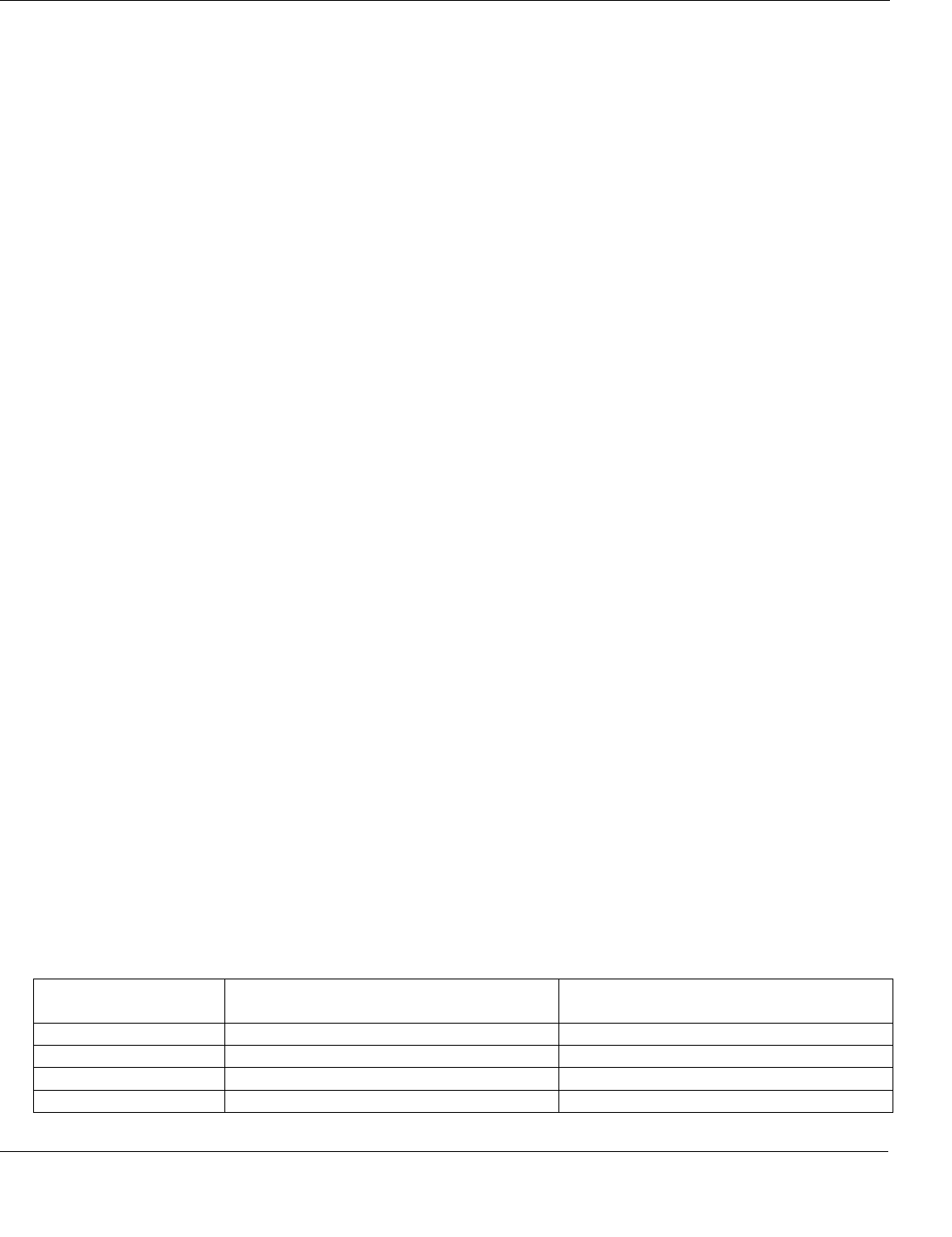
ptg6843605
FMCG – focused factory
The Encyclopedia of Operations Management Page 138
processed on one machine at a time without preemption and a machine processes no more than one job at a
time.”
See facility layout, job shop, job shop scheduling.
FMCG – See Fast Moving Consumer Goods (FMCG).
FMEA – See Failure Mode and Effects Analysis (FMEA).
FMS – See Flexible Manufacturing System.
FOB – A common freight/shipping acronym meaning “free on board.”
When a buyer purchases something and pays for it with terms “FOB origin,” the responsibility of the seller
stops when the goods are delivered to the transporting company in suitable shipping condition. It is then the
buyer’s responsibility to pay for transportation. In addition, if something gets lost or is damaged during
transport, it is settled between the buyer and the transportation company. FOB is an official Incoterm.
See Cash on Delivery (COD), Incoterms, terms, waybill.
focus group – A qualitative research technique that collects ideas from a small group of people.
Focus groups are often used as a marketing research tool to assess customer reactions to product ideas, but
they can also be used for other purposes such as collecting employee opinions and gathering process
improvement ideas. It is generally a good idea to have an experienced facilitator lead the focus group. Focus
groups often use structured brainstorming methods such as the Nominal Group Technique (NGT).
See brainstorming, Nominal Group Technique (NGT).
focused factory – A process that is “aligned with its market” and therefore requires a limited range of operations
objectives.
The concept of a focused factory was originally developed by Harvard Business School Professor Wickham
Skinner (1974) in his seminal article entitled “The Focused Factory.” Skinner stated “The focused factory will
out-produce, undersell, and quickly gain competitive edge over the complex factory.” Skinner’s article argues
that a factory can excel at no more than one or two operations tasks, such as quality, delivery reliability, response
time, low cost, customization, or short life cycle products.
“You can’t be everything to everyone” is an old phrase that suggests that people (and firms) cannot do
everything well, at least not in one process. A focused factory is a means of implementing a strategic direction
for an operation. A firm can have several “focused factories” in any one factory building or location.
Schroeder and Pesch (1994) define a focused factory as one with “a limited and consistent set of demands
that originate from its products, processes, and customers, enabling the factory to effectively support the business
strategy.” They state that “many manufacturing executives define focus simply as having a limited number of
products … but this definition is too narrow … the key is to limit the demands placed on manufacturing by
limiting the number of processes and customers as well as the number of products.” Schroeder (2008) notes that
the types of focus could be based on products, processes, technologies, sales volume, customer interface (make to
stock versus make to order), or product maturity.
A focused factory, therefore, is not necessarily a factory that produces only one product, but a factory that
reduces the variability or range of process requirements so the factory can excel at its key operations tasks.
Focused factories align their processes to their markets and to the operations tasks required for those markets.
This approach has implications for many process design issues, such as workforce (skill levels, salaried versus
direct, customer-facing skills, etc.), performance metrics, customer interface, planning and control systems, cost
accounting systems, facility layout, and supplier relationships. For example, the table below compares an
operationally excellent make to stock “focused factory” making high volumes of standard products to an
engineer to order “focused factory” developing innovative new products in response to customer orders.
Make to stock focused (MTS) factory versus engineer to order (ETO) focused factory
Operationally excellent
focused factory
Product leadership engineer to order
focused factory
Workforce Mostly direct labor, low wages Many salaried workers, high wages
Performance metrics Inventory, cost, cycle time Time to market, on-time delivery
Customer interface Make to stock/Assemble to order Engineer to order/Make to order
Planning and control Pull systems, MRP Project management
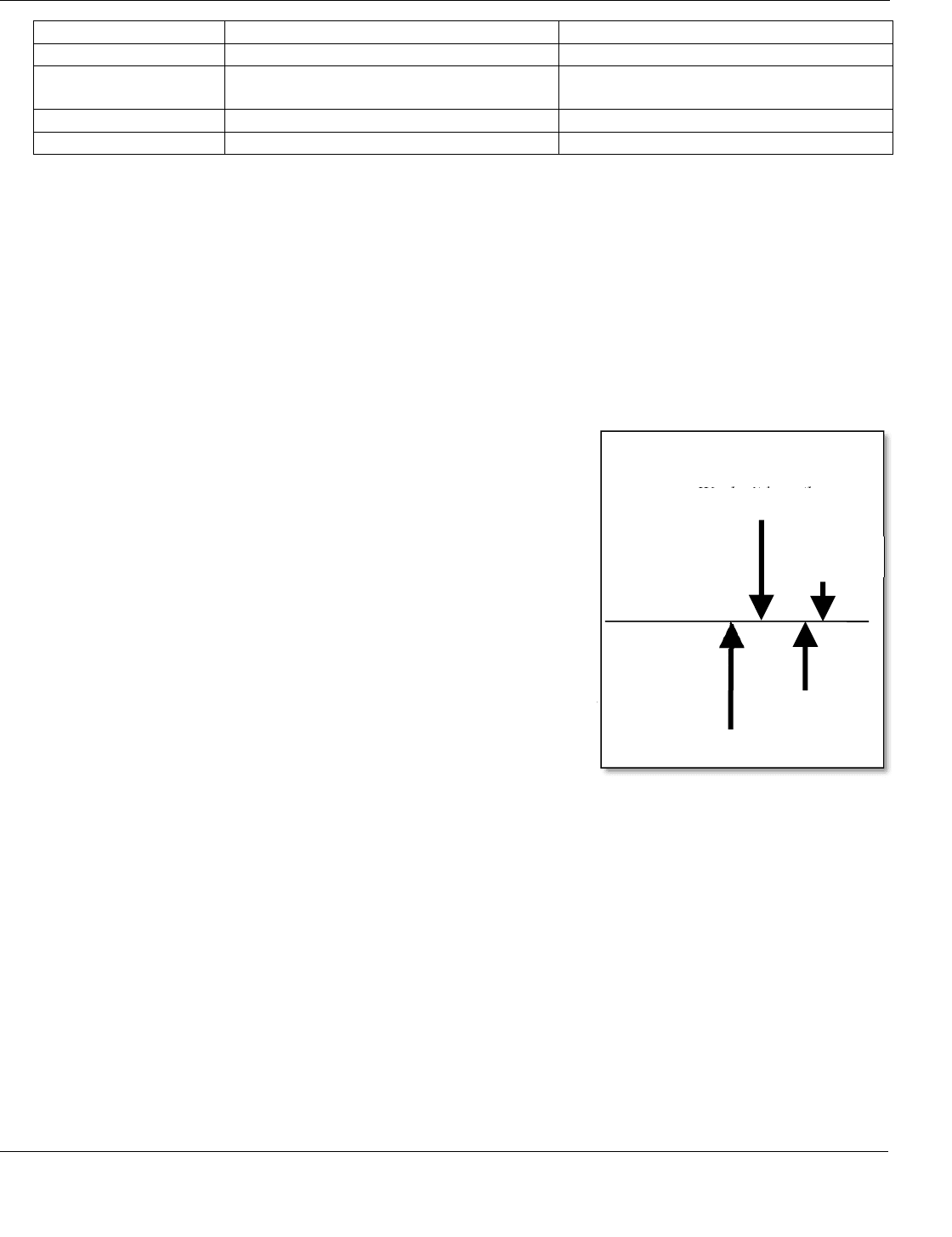
ptg6843605
fool proofing
−
force majeure
Page 139 The Encyclopedia of Operations Management
Cost accounting Throughput accounting, standard costs Job-order costing, project costing
Facility layout Product layout Project layout, process layout
Supplier relationships Many suppliers for commodities
purchased at lowest cost
Few strategic “partners” who supply
technologies as well as components
Main concern Cost reduction, reliable delivery Innovation, time to market
Main strategy Lean manufacturing Innovation, technology leadership
When a factory focuses on just a few key manufacturing tasks, it will be smaller, simpler, and more
successful than a factory attempting to be all things to all customers. A focused factory can often deliver
superior customer satisfaction to a vertical market, which allows it to dominate that market segment.
Some factories are unfocused originally because designers fail to recognize the limits and constraints of
technologies and systems. Other factories start out highly focused, but lose focus over time due to product
proliferation. In a sense, losing focus is “scope creep” for a factory.
See cellular manufacturing, core competence, facility layout, functional silo, handoff, operations strategy,
plant-within-a-plant, product proliferation, scope creep, standard products, throughput accounting.
fool proofing – See error proofing.
force field analysis – A brainstorming and diagramming technique useful for gaining a shared understanding of the
“tug of war” between the forces (factors) that drive (motivate) change toward a goal and the forces that restrain
(block) change and support the status quo; force field analysis is supported by the force field diagram.
Force field analysis was developed by Kurt Lewin (1943), who saw
organizations as systems where some forces were trying to change the
status quo and some forces were trying to maintain it. A factor can be
individual people, groups, attitudes, assumptions, traditions, culture,
values, needs, desires, resources, regulations, etc. Force field analysis can
be used by individuals, teams, and organizations to identify the relevant
forces and focus attention on ways of reducing the hindering forces and
encouraging the helping forces. The tool helps build a shared
understanding of the relevant issues and then helps build an action plan to
address the issues.
The figure on the right is an example of a force field “tug of war” on
the issue of keeping new product development inside a firm. The
equilibrium line separates the driving and restraining forces. (Note that
the equilibrium line can be either vertical or horizontal.) The lengths of
the arrows represent the strength of the forces. After the diagram is drawn,
the team should focus on finding ways to strengthen or add driving forces
and reduce or remove restraining forces.
See Analytic Hierarchy Process (AHP), brainstorming, decision tree, Kepner-Tregoe Model, Lewin/Schein
Theory of Change, Pugh Matrix, stakeholder analysis.
force field diagram – See force field analysis.
force majeure – Events (or forces) beyond the control of the parties of a contract that prevent them from complying
with the provisions of the contract; from French meaning superior force.
Typical forces that might be included in such a contract include governmental actions, restraints by court,
wars or national emergencies, acts of sabotage, acts of terrorism, protests, riots, civil commotions, fire, arson,
explosions, epidemics, lockouts, strikes or other labor stoppages, earthquakes, hurricanes, floods, lightning,
embargos, blockades, archeological site discoveries, electrical outages, and interruptions of supply. The term
“force majeure” is often used as the title of a standard clause in contracts exempting the parties for non-
fulfillment of their obligations as a result of conditions beyond their control. In some cases, an industry shortage
is considered a justifiable reason for a supplier to declare a force majeure and put customers on allocation.
Here is an example of a force majeure paragraph from naturalproductsinsider.com/ibg/terms.asp (November
27, 2005): “Neither party shall be deemed in default of this Agreement to the extent that performance of their
obligations or attempts to cure any breach are delayed or prevented by reason of any act of God, fire, natural
disaster, accident, act of government, shortages of materials or supplies, or any other causes beyond the control
Force field example
Better control o
f
quality
We don’t have the
technology
We don’t have
the capacity
Build a new core
competence
Restraining forces
Driving forces
Develop product in-house

ptg6843605
forecast accuracy – forecast error metrics
The Encyclopedia of Operations Management Page 140
of such party, provided that such party gives the other written notice thereof properly and, in any event, within
fifteen days of discovery thereof and uses its best efforts to cure the delay (force majeure). In the event of such
force majeure, the time of performance or cure shall be extended for a period equal to the duration of the Force.”
See leadtime syndrome.
forecast accuracy – See forecast error metrics.
forecast bias – The average forecast error over time, defined mathematically as
1
1
T
t
t
E
T
, where E
t
is the forecast
error in period t and T is the number of observations available.
The ideal forecasting system has a zero forecast bias, which means that it has an average forecast error of
zero. When the forecast bias is zero, the positive and negative forecast errors “balance each other out.” Bias is
not the same as forecast accuracy. It is possible that a forecasting system with low accuracy (high mean absolute
error) has zero forecast bias, and conversely, a forecasting system with a high accuracy (low mean absolute error)
has high forecast bias. Forecast bias is a measure of the average performance of the forecasting system, whereas
forecast accuracy is a measure of the reliability of the forecast.
Good forecasting systems have built-in exception reporting systems that trigger a “tracking signal” report
when the forecast bias is large. See the tracking signal entry.
In practice, forecast bias can be tracked with three approaches: the moving average, the running sum of the
errors, or the exponentially smoothed average error. The moving average approach defines the forecast bias as
the average over the last T periods. The running sum of the errors approach uses the simple equation
1t t t
R
R E
, where
t
R
is the running sum of the forecast error at the end of period t. With this approach, a
small consistent bias will become large over many periods. The exponentially smoothed average uses the
equation
1t t t
SE SE E
, where SE
t
is the smoothed average error at the end of period t and α is the smoothing
constant (0 < α < 1). This is probably the best approach because it puts more weight on the most recent data.
See alignment, bias, demand filter, forecast error metrics, Mean Absolute Deviation (MAD), Mean Absolute
Percent Error (MAPE), mean squared error (MSE), tracking signal.
forecast consumption – A method for reducing forecasted demand as the actual demand is realized.
See forecasting, Materials Requirements Planning (MRP).
forecast error metrics – Mathematical measures used to evaluate forecast bias and accuracy.
Forecast error is defined as the actual demand minus the forecast in a period. Using standard mathematical
notation,
t t t
E
D F
, where E
t
is the forecast error in period t, D
t
is the demand in period t, and F
t
is the forecast
made for period t. Given that the demand is rarely known, most organizations use actual sales as an estimate of
demand. The following table is a summary of many forecast error metrics collected by this author. The symbol
(◄) indicates metrics recommended by the author.
Forecast bias metrics for a single item
Average error,
E
◄
Smoothed error, SE
t
Mean Percent Error, MPE
Mean Error Scaled by the Mean Demand,
Running Sum of the Forecast Errors, RSE
t
Tracking Signal, TS
1t
, TS
2t
◄
Forecast accuracy metrics for a single item
Mean Absolute Deviation (Mean Absolute
Error), MAD
Smoothed Mean Absolute Deviation, SMAD
t
Mean Absolute Deviation as percent of average
demand, MADP
Mean Absolute Percent Error (Winsorized 1),
MAPE
Smoothed Mean Absolute Percent Error,
SMAPE
t
Relative Absolute Error – Random Walk,
RAE
rw
Relative Absolute Error – Exponential
Smoothing, RAE
es
Mean Absolute Scaled Error, MASE ◄
Thiel’s U, U
1
, U
2
, U
3
Mean Squared Error, MSE
Smoothed Mean Squared Error, SMSE
t
Root Mean Squared Error, RMSE
Forecast Attainment, FA
Demand Filter, DF
t
◄

ptg6843605
forecast horizon − forecasting
The Encyclopedia of Operations Management Page 141
Forecast bias metrics for a group of items
Count or percentage of items with positive
forecast error, PPFE
Weighted Average Forecast Error, WAFE
Forecast Attainment, FA ◄
Forecast accuracy metrics for a group of items
Weighted Mean Absolute Percent Error
(Winsorized at 1), WMAPE
Weighted Mean Absolute Scaled Error,
WMASE ◄
Median MAPE, MdMAPE
Geometric Mean of the MAPE, GMMAPE
Weighted Relative Absolute Error, WRAE
Median RAE, MdRAE
Geometric Mean RAE, GMRAE
Forecast Attainment, FA
Weighted Absolute Percent Error, WAPE
Percent Better, PB
Other forecast error metrics
Sample variance, standard deviation,
2
ˆ
,
ˆ
Sample correlation, coefficient of
determination, r, r
2
Regression, a, b, r
2
Sample autocorrelation at lag k,
ˆ
k
See bias, Box-Jenkins forecasting, correlation, demand filter, exponential smoothing, forecast bias, forecast
horizon, forecast interval, forecasting, geometric mean, linear regression, Mean Absolute Deviation (MAD),
Mean Absolute Percent Error (MAPE), Mean Absolute Scaled Error (MASE), mean squared error (MSE),
Median, Median Absolute Percent Error (MdAPE), operations performance metrics, Relative Absolute Error
(RAE), standard deviation, Thiel’s U, tracking signal, weighted average, Winsorizing.
forecast horizon – The number of time periods into the future that are forecasted.
For example, if a firm regularly makes forecasts that cover the next six months, it has a six-month forecast
horizon. If a firm has a six-month manufacturing leadtime, it should clearly forecast at least six months into the
future. Forecast error increases rapidly with the forecast horizon. It is often more practical and more economical
to spend money to reduce the manufacturing leadtime (and the corresponding forecast horizon) than it is to find a
better forecasting method to improve the forecast error for a given forecast horizon.
See all-time demand, forecast error metrics, forecast interval, forecasting, forward visibility.
forecast interval – The highest and lowest reasonable values for a forecast.
This is usually set as the forecast (which is usually an expected value) plus or minus z standard deviations of
the forecast error. A reasonable value is z = 3. A forecast interval is very similar to a confidence interval, but it
is not exactly the same. It is important to understand that the forecast interval is strongly influenced by the
forecast horizon, where the forecast interval increases with the forecast horizon.
See forecast error metrics, forecast horizon, forecasting, forward visibility, geometric mean.
forecasting – Predicting the future values of a variable.
Almost all organizations need to forecast sales or demand on a regular basis. Organizations also need to
forecast the cost of materials, the availability of labor, the performance of a technology, etc. The two main types
of forecasting methods are quantitative and qualitative methods. Quantitative methods can be further broken
into time series methods and causal methods.
Time series methods (also called intrinsic forecasting methods) seek to find historical patterns in the data
and then extrapolate those into the future. The simplest time series models are an average, moving average, and
weighted moving average. Exponential smoothing forecasting models create forecasts with a weighted moving
average, where the weights decline geometrically with the time lag. The Winters’ and Holt-Winters’ models for
exponential smoothing (Winters 1960) add trend and seasonality. The Box-Jenkins method is a much more
sophisticated model for time series forecasting (Box, Jenkins, & Reinsel 1994).
Causal methods (also called extrinsic or econometric forecasting methods) are nearly always multiple
regression methods, where the model predicts one variable (the dependent variable) from one or more other
independent lagged variables. See the linear regression and econometric forecasting entries.
Qualitative methods are subjective methods used to collect estimates from people. See the Delphi and
technological forecasting entries for more information on qualitative models.
All time series can be decomposed into a seasonal pattern (tied to the calendar or a clock), a trend, cyclical
(irregular patterns), and what is left over (random noise). See the seasonality, trend, and time series entries.

ptg6843605
forecasting lifetime demand – forging
The Encyclopedia of Operations Management Page 142
Forecast error is defined as the actual value minus the forecasted value. Most forecasting models assume
that the random error is normally distributed. See the forecast error metrics entry for more detail.
Demand forecasts are better when:
• Expressed as a point estimate (a single number) and a forecast interval rather than just a point estimate.
• Aggregated across product families, regions, and periods.
• Made for a short horizon.
• Based on many periods of historical data.
• Supplemented by human intelligence.
• Clearly differentiated from a plan.
• Carefully aligned with reward systems.
• Created collaboratively by the supply chain.
• Used by everyone without modification.
Fundamental forecasting principles:
• Forecasting is difficult (especially if it is about the future).
• The only thing we know for sure about a forecast is that it is wrong.
• Separate forecasting and planning – forecast ≠ plan.
• It is easier to fit a model to historical data than it is to create accurate forecasts.
• Use lean to reduce cycle times and forecast horizons.
• Use information systems to replace inventory and improve service.
• Share demand information to reduce forecast error and coordinate the supply chain.
• Use leading indicators to reduce forecast error.
• Use demand management to balance supply and demand.
• Use yield management to maximize revenue.
• Use demand filters and tracking signals to control forecasts.
• Use the Bass Model for product life cycle forecasting, particularly at the beginning of the product life cycle.
• Use the geometric time series model for end-of-life forecasting.
Two misunderstandings of forecasting are common. Each of these is discussed below.
Confusing forecasting and planning – Many firms use the term “forecast” for their production plan. As a
result, they lose important stockout (opportunity cost) information and create confusion and muddled thinking
throughout their organizations. In a typical business context, the firm needs a forecast of the demand for its
products without consideration of the firm’s capacity or supply. In response to this “unfettered” (unconstrained)
demand forecast, the firm should make its production and inventory plans. In some periods, the firm might plan
to have inventory greater than demand; in other periods, the firm might plan to have inventory short of demand.
Confusing sales and demand history – Many people use the terms “sales” and “demand” interchangeably.
However, they are not the same. Technically, demand is sales plus lost sales. Most firms keep a sales history,
which they sometimes call the “demand history.” (SAP uses the term “consumption” history.) This is a
“censored” time series because sales will be less than demand when sales are lost due to lack of inventory. This
distinction is important when using historical sales (not demand) to forecast future demand. Some retailers try to
use information on the “in-stock position” to inflate the sales history to estimate the demand history.
The website www.forecastingprinciples.com provides a dictionary, bibliography, and other useful
information on forecasting. The Principles of Forecasting is a free Web-based book by J. Scott Armstrong that
can be found at www.forecastingprinciples.com/content/view/127/10 (April 18, 2011).
See all-time demand, anchoring, Bass Model, Box-Jenkins forecasting, censored data, coefficient of
variation, Collaborative Planning Forecasting and Replenishment (CPFR), Croston’s Method, Delphi
forecasting, demand, demand filter, demand management, econometric forecasting, elasticity, exponential
smoothing, forecast consumption, forecast error metrics, forecast horizon, forecast interval, forward visibility,
inventory management, leading indicator, linear regression, lumpy demand, Mean Absolute Deviation (MAD),
Mean Absolute Percent Error (MAPE), moving average, Sales & Operations Planning (S&OP), seasonality,
supply chain management, technological forecasting, Theta Model, time bucket, time series forecasting, tracking
signal, trend.
forecasting lifetime demand – See all-time demand.
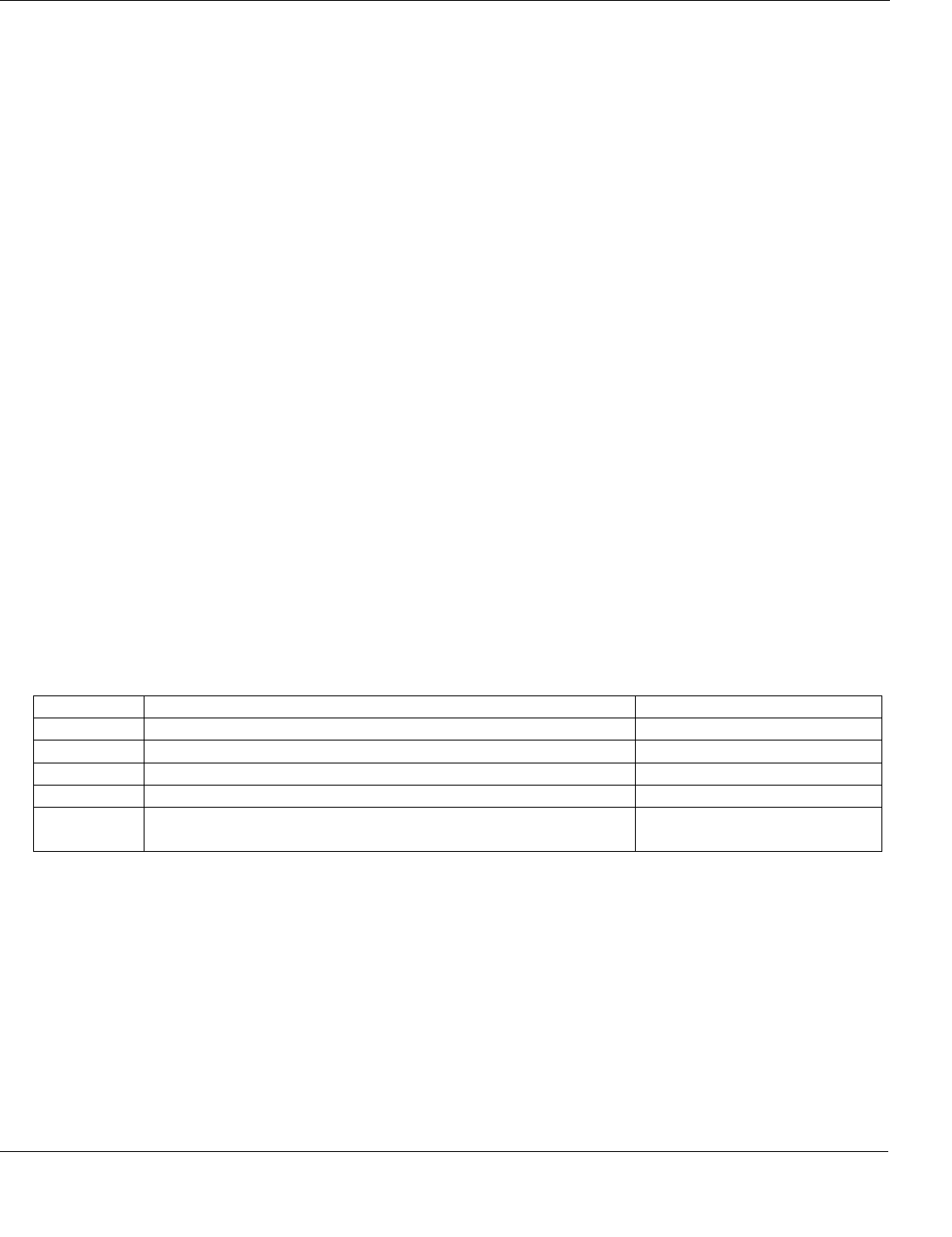
ptg6843605
forging − forward pass
Page 143 The Encyclopedia of Operations Management
forging – A manufacturing process that shapes metal by heating and hammering.
Forging usually involves heating metal (below the melting point) and then using hammering or pressure to
shape the metal. Forged parts usually require additional machining. Forging can be cold, warm, or hot.
See manufacturing processes.
for-hire carrier – A common carrier or contract carrier trucking firm that transports goods for monetary
compensation.
See carrier, common carrier, logistics.
forklift truck – A vehicle used in warehouses, factories, and distribution centers to lift, move, stack, and rack loads
(usually on pallets); also called a lift truck, fork lift, and hi-low.
A forklift may have a special attachment on the front for handling certain specialized products.
See cross-docking, logistics, materials handling, pallet, warehouse.
forming-storming-norming-performing model – A model that explains the progression of team development.
This model of group development was first proposed by Tuckman (1965), who maintained that all four
phases are necessary for a team to be successful. Tuckman and Jensen (1977) added “adjourning” in 1970,
which some call “mourning.”
• Forming – In this first stage, the team has high dependence on the leader for guidance. The team has little
agreement on goals other than what the leader has defined. Individual roles and responsibilities are unclear.
Processes are often ignored and team members often test the boundaries of the leader. The leader directs.
• Storming – Team members contend to establish their position relative to those of other team members and
the leader and decision making is difficult. Informal alliances form and power struggles are common. The
team needs to be focused on goals and compromises may be required to enable progress. The leader
coaches.
• Norming – The team begins to develop consensus and clarify roles and responsibilities. Smaller decisions
may be delegated to individuals or smaller teams. The team may engage in fun and social activities. The
team begins to develop processes. The leader facilitates and enables.
• Performing – The team has a shared understanding of its vision and is less reliant on the leader.
Disagreements are resolved positively and process changes are made easily. Team members might ask for
assistance from the leader with personal and interpersonal development. The leader delegates and oversees.
• Adjourning (Mourning) – The team’s work is complete when the task is successfully completed and the
team members can feel good about their work. The leader should conduct a post-project review to ensure
that individuals learn and that organizational learning is captured and shared.
Stage Description Leader’s role
Forming Team tests leader while team orients. Directs
Storming Team has conflict and contention for position in the team. Coaches
Norming Team spirit develops and processes and roles are clarified. Facilitates and enables
Performing Structural issues are resolved and roles become more flexible. Delegates and oversees
Adjourning/
Mourning
Members are sad. This is a good opportunity for learning. Conducts post-project review
See brainstorming, mission statement, post-project review, project management.
formulation – A list of the quantities of each ingredient needed to make a product, typically used for chemicals,
liquids, and other products that require mixing; also called a recipe.
See bill of material (BOM).
forward buy – The practice of purchasing materials and components in excess of the short-term anticipated
demand; the use of forward buys is called forward buying.
Forward buying is often motivated by trade promotions (temporary price reductions) or anticipation of a
potential price increase. Although forward buying might reduce the acquisition cost for the customer, it can
increase inventory carrying cost for the customer and increase the variability of the demand for the supplier.
Everyday low pricing (EDLP) is a way to encourage customers to reduce forward buying and stabilize demand.
See acquisition, bullwhip effect, Everyday Low Pricing (EDLP), futures contract, loss leader, promotion,
purchasing.

ptg6843605
forward integration – fulfillment
The Encyclopedia of Operations Management Page 144
forward integration – See vertical integration.
forward loading – See forward scheduling.
forward pass – See forward scheduling.
forward pick area – A space within a warehouse used for storing and picking higher-demand items; this space is
resupplied from a larger reserve storage area; sometimes called a golden zone.
This area usually has fixed storage locations so that pickers can remember where the items are located.
Using a forward pick area can reduce unproductive travel time by order pickers but must be replenished from a
bulk storage (reserve storage) area somewhere else in the warehouse. A forward pick area usually has small
quantities of high-volume parts stored in carton flow racks positioned near a conveyor, shipping area, or the
loading dock. Forward pick areas are common in distribution centers in North America, especially those
supporting retail sales. Bartholdi (2011) provided more information in his free on-line book and Bartholdi and
Hackman (2008) developed a mathematical model for optimizing the space allocated to a forward pick area.
See picking, reserve storage area, slotting, warehouse, Warehouse Management System (WMS).
forward scheduling – A finite scheduling method that begins with the start date (which could be the current time)
and plans forward in time, never violating the capacity constraints; also called forward loading or forward pass.
The start date and task times are the primary inputs to a forward scheduling algorithm. The planned
completion date is an output of the process. Forward scheduling is quite different from back scheduling, which
starts with the due date (planned completion date) and plan backward to determine the planned start date. The
critical path method uses forward scheduling to determine the early start and early finish for each activity in the
project network. See the finite scheduling entry for more detail.
See back scheduling, Critical Path Method (CPM), finite scheduling.
forward visibility – Giving information on future demand and production plans to internal and external suppliers.
Customers can give their suppliers forward visibility by sharing their forecasts and production plans. This
allows suppliers to plan their production to better meet their customers’ requirements.
See Electronic Data Interchange (EDI), forecast horizon, forecast interval, forecasting, Materials
Requirements Planning (MRP).
foundry – A facility that pours hot metal into molds to create metal castings.
A casting is any product formed by a mold (British, mould), which is a hollow cavity with the desired shape.
The casting can be either ejected or broken out of the mold. Castings do not always require heat or a foundry.
For example, plaster may be cast. Sand casting uses sand as the mold material.
A foundry creates castings by heating metal in a furnace until it is in liquid form, pouring the metal into a
mold, allowing the metal to cool and solidify, and finally removing the casting from the mold. Castings often
require additional operations before they become products sold to customers. Castings are commonly made from
aluminum, iron, and brass. Castings are used in many products, such as engines, automobiles, and machine
tools.
See manufacturing processes, mold.
Fourth Party Logistics (4PL) provider – See Third Party Logistics (3PL) provider.
fractile – A selection portion of a probability distribution.
For example, the lower quartile is the lower 25% of the cumulative probability distribution and the top decile
is the top 10% of the cumulative probability distribution.
See interquartile range, newsvendor problem.
Free-on-Board (FOB) – See FOB.
freight bill – Invoice for the transportation charges of goods shipped or received. See logistics
freight forwarder – An independent business that handles export shipments for compensation.
See logistics.
front office – See back office.
frozen schedule – See time fence.
FTE – See Full Time Equivalent.
fuel surcharge – An extra charge added to the cost of a shipment to cover the variable cost of fuel.
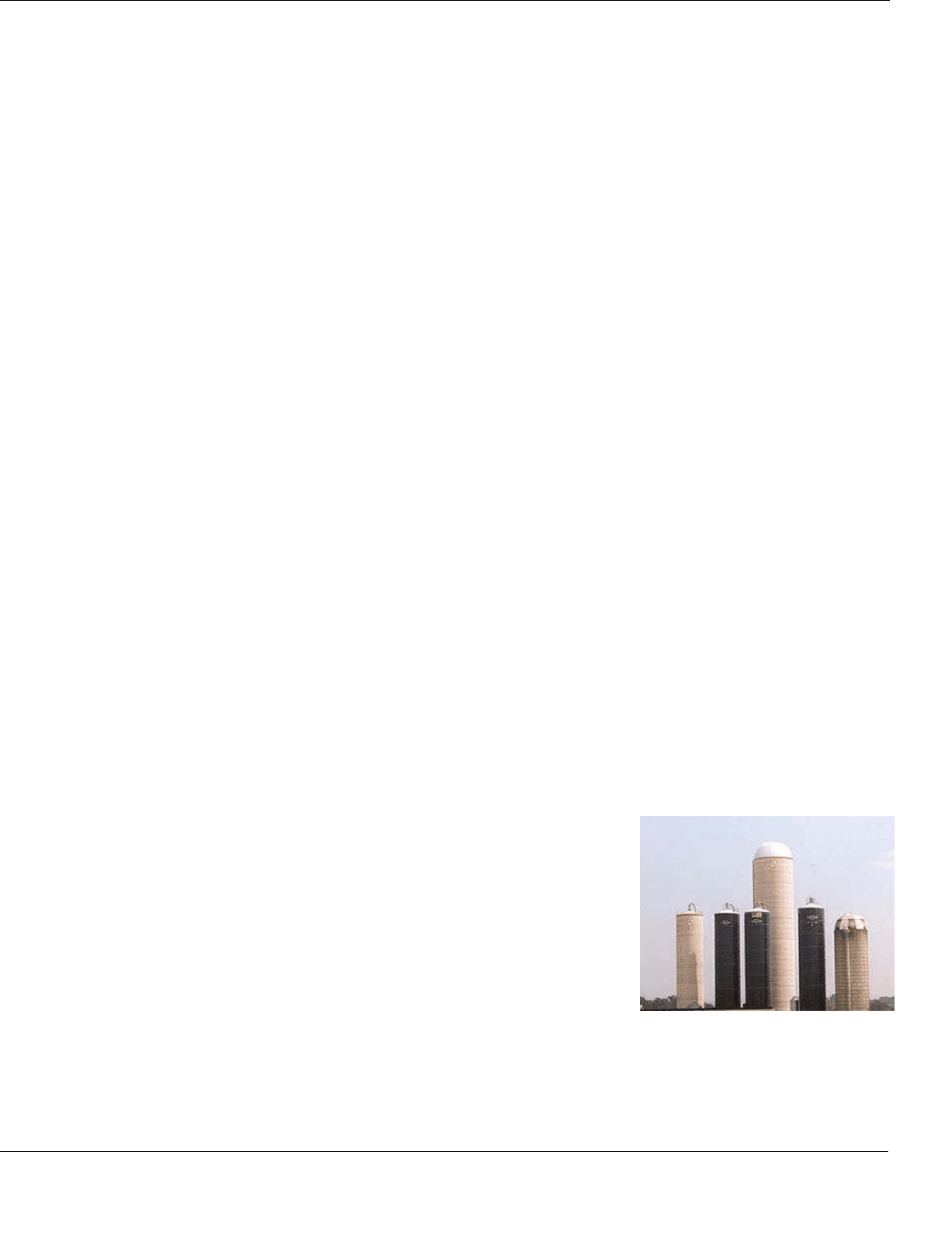
ptg6843605
fulfillment
−
functional silo
Page 145 The Encyclopedia of Operations Management
fulfillment – The process of shipping products to customers in response to customer orders; also called fulfillment
operations.
The fulfillment process almost always involves
order entry
,
picking
items from a warehouse or distribution
center,
packaging
, and
shipping
. In addition, fulfillment may also involve:
Supplier-facing activities
– Placing replenishment orders, managing in-bound logistics, providing
information on current inventory status to suppliers, and expediting.
Other customer-facing activities
– Tracking orders, sending automated e-mails to customers to let them
know their packages are in transit, satisfying customer requests for information, handling returns, and
providing help desk support for products.
Financial activities
– Processing credit card transactions, invoicing customers, and paying suppliers.
The term “fulfillment” is most often associated with e-commerce and other operations that ship many small
orders to end customers rather than operations that process shipments to other manufacturers, wholesalers, or
resellers. Examples of fulfillment operations include fulfillment operations for mail-order catalogs, Internet
stores, and service parts. A
fulfillment house
is a third party that performs outsourced storage, order picking,
packaging, shipment, and other similar services for others.
See customer service, help desk, order entry, replenishment order, Third Party Logistics (3PL) provider,
warehouse, Warehouse Management System (WMS).
Full Time Equivalent (FTE) – A labor staffing term used to equate the salary or work hours for a number of part-
time people to the number of “equivalent” full-time people.
For example, three people working half-time is equal to 1.5 FTEs.
full truck load – See less than truck load (LTL).
functional build – A design and manufacturing methodology that de-emphasizes individual part quality and
focuses on system quality.
Conventional design and manufacturing processes sequentially check each part being produced against
design specifications utilizing C
p
and C
pk
metrics. This requires that all critical dimensions of a part be within
specification limits. An example is an auto manufacturer checking 1,400 points on a door die. If any of these are
out of tolerance, they would be reworked to achieve proper specifications. With a functional build, if the part is
close to passing, it is used in the assembly and the overall assembly is held to tighter tolerances. In contrast, the
functional build process checks fewer points and fixes only the ones necessary to bring the door assembly
(system) into tolerance. The result is a higher quality assembly, which is what the customer really cares about, at
a substantially lower cost.
A study conducted by CAR found that Japanese automobile manufacturers had the lowest quality doors as
measured by C
pk
for individual parts, but had high customer scores for the door assembly, while American
manufacturers had higher door component C
pk
values, but lower customer scores (adapted from “The Quest for
Imperfection,” Charles Murray,
Design News
, October 10, 2005, www.designnews.com).
See process capability and performance, Taguchi methods.
functional silo – A functional group or department in an organization, such as
marketing, operations, accounting, and finance, that is overly focused on its
own organization and point of view, which results in inefficient and
ineffective processes.
A silo is a tall cylindrical tower used for storing grain, animal feed, or
other material. The photo on the right shows a series of six silos on an
American farm. The metaphor here is that organizations often have “silos”
where people in functional groups are overly focused on their own functions,
do not coordinate with other functions, do not share information with other
functions, and do not have constructive interactions with other functions. The
functional departments are usually pictured as vertical lines, whereas processes serving each market segment are
drawn as horizontal lines that cross multiple silos. The result of the functional silo problem is inefficient
processes, poor customer service, and lack of innovation.
